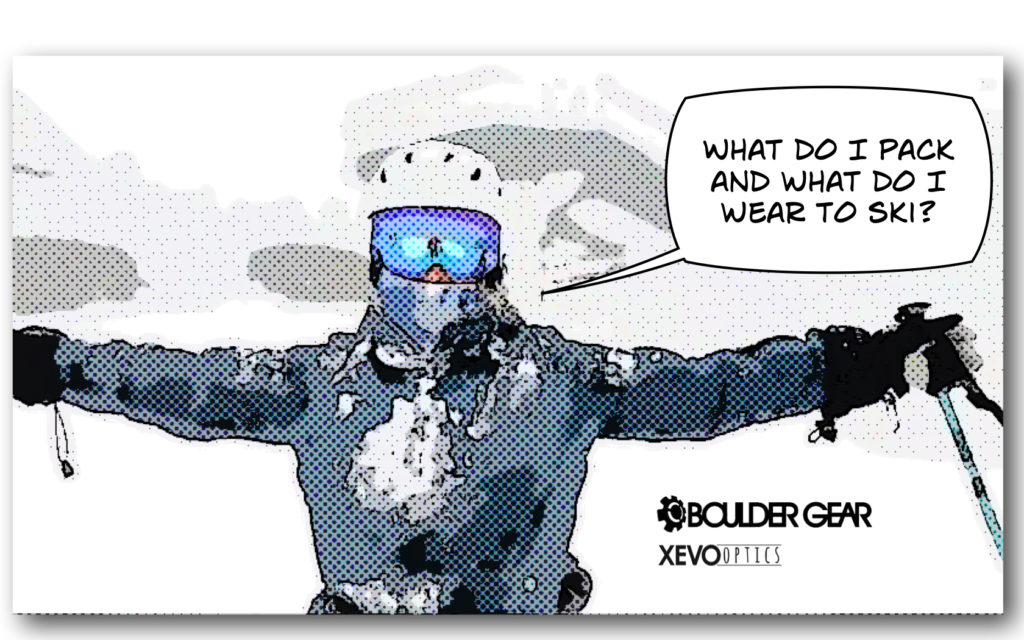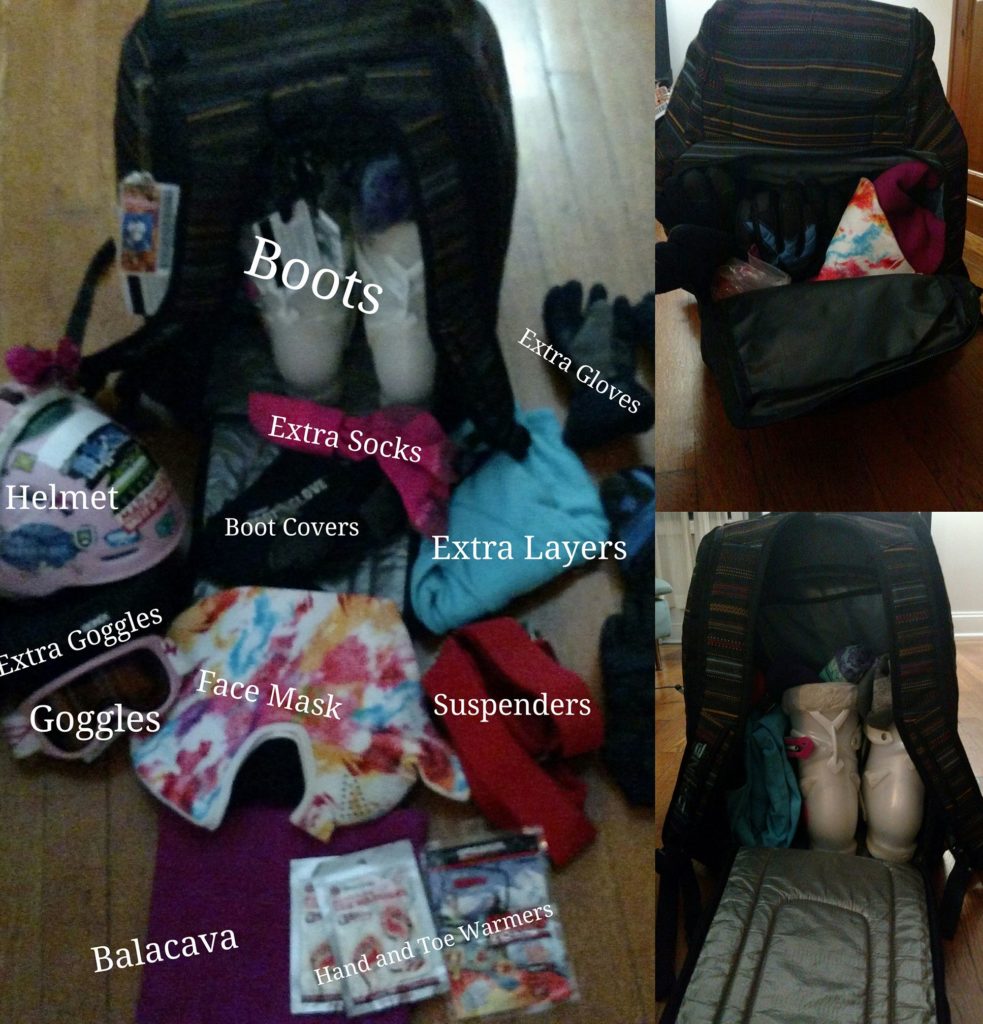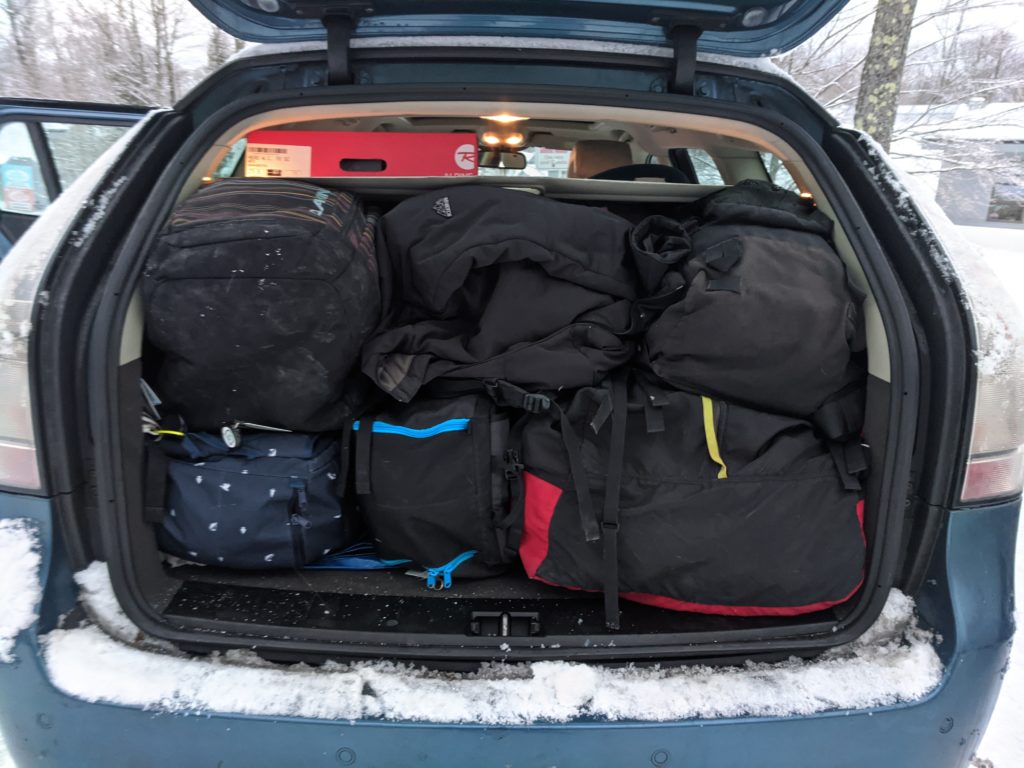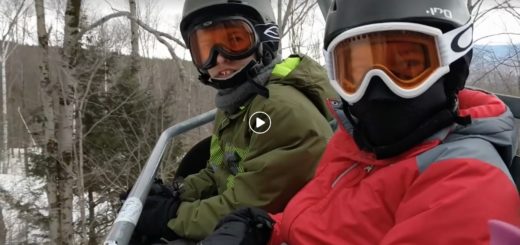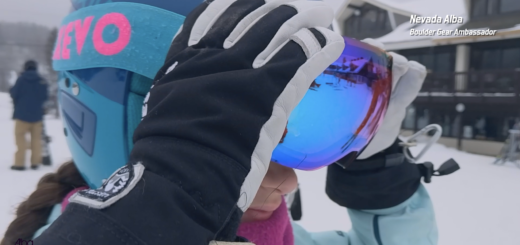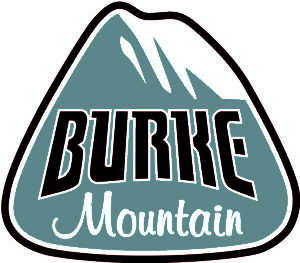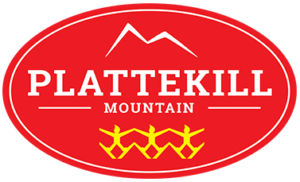The Ski Family’s Guide to What to Wear Skiing, a Well Packed Boot-bag and Packing it all in Your Vehicle
A lot of people ask us what to wear, what to pack and how do we fit all of that stuff in our car to go skiing. Getting organized will be useful when you are starting out, and will help keep track of all your essential items, especially when you are packing for kids.
Clothing
We can all agree that the weather can be fickle, but you can be surprised how much colder it can be in the mountains compared to the city. To have a successful ski adventure with your family you will want to stay warm.
Over the years I have learned some useful tips that keep our family warm for any type of weather on the mountain. You don’t need anything fancy and some items may already in your wardrobe. The most obvious things are a ski jacket and ski pants, preferably waterproof, or at least water-resistant. As kids learn to ski, they are sure to fall, and that means getting snow down your pants. Ski pants with suspenders or bibs are better. Outer-layers should offer wind protection and keep you dry from any precipitation, but the real trick to staying warm is layering up.
Start with a non-cotton base-layer, this will wick moisture away from your body. In a pinch I have used footless tights, this actually does a great job, and will keep you warmer than you might think. Only have old tights with the feet? Repurpose them and cut the feet off, while being a little green at the same time.
For mid-layers think insulation. You will want 2 layers that work together for those extra cold days, which include a thin micro-fleece layer, which could be a turtleneck or long sleeve shirt with a neck zip is ideal, The neck zip will come in handy in the lodge so you don’t overheat. Then you will want a fleece or wool sweater. You should make sure that the mid-layers fit properly and are not too bulky. On really cold days a vest could also come in handy, if you need an extra layer without bulk in the arms.
No need to go out and buy expensive ski socks for your first trip to the slopes. Thin non-cotton socks that fit well to the knee can be substituted. It may seem counterintuitive at first, but putting on two pairs of socks or bulky socks will not make your feet warmer. The toes being able to wiggle around will help prevent frostbite.
Next, a good pair of gloves or mittens; preferably ones that will fit liners and are waterproof. Always bring an extra pair, along with extra socks. The day you forget them, will certainly be the day, someone gets snow in their boots or a glove goes missing. We learned the hard way, and buying these items on the mountain are expensive. A balaclava or neck warmer that can be pulled up over the face to keep from getting windburn, an inferior substitute, could be a bandana or a short not so bulky scarf.
Be sure to have a good winter jacket and snow pants or bibs. Preferably water proof. Most Winter coats should do the job though NEVER ski in jeans! Well you can if you don’t fall – LOL.
What to pack in a boot-bag
Getting a backpack style ski boot-bag was one of the best investments and as soon as she was able to ski on her own she was able to carry her bag, which as you probably know makes traveling a little bit easier.
Using my daughter’s boot-bag as an example, her boot bag consists of three main compartments, boots in the back, helmet on top, and a large front pouch for all the extras and accessories.
Let’s break it down
Boot Compartment– nothing else goes in here except the boots. There will probably be plenty of space, but inevitably you will come in from the snow and the boots will be wet from snow or in the spring things can even get messier.
Helmet Compartment- in addition to your helmet, two pairs of goggles, if you don’t have goggles with interchangeable lenses. Be sure to take them off of the helmet before putting them back in the bag, storing, so the lenses don’t get scratched. There should still be space, for a face mask and a balaclava.
Accessories Compartment – At least 2 pairs of gloves. I pack 2 pairs for each of us plus a light pair for the spring. Gloves always go missing, and it will save you from having to buy new gloves on the mountain. 2 pairs ski socks, because if you socks for get wet your feet will get cold. You will be glad you have an extra pair. Suspenders (optional) if you have bib ski pants then these aren’t needed, but they are great with the regular ski pants to keep the snow out in case you fall down. An extra later, you know the one layer they refused to put on, will come in handy on those cold days. Hand and Toe Warmers- not that big of a deal, but it will save time and a bit of money by buying in bulk off mountain. Snacks- not pictured, but always a good idea. It seems that no matter what my kids have for breakfast, by time we get to the mountain they are hungry. Having them snack while getting ready, sure beats being on the lift and them already wanting to break for lunch.
Be sure to take everything out of your boot-bag that was worn after a day of skiing. This not only includes obvious things like boots, but also goggles, which will fog up the next day. Also balaclavas, gloves and anything else that may have become damp.
Packing your vehicle
The next part is how to pack it in your car! This obviously may take some creativity and why ski bags with a flat backs make sense as you can put them back to back to save on space. Our car is a 5 passenger SAAB – and we are able to pack it like this every weekend.
For more about skiing on a budget see: http://www.albaadventures.com/superskimom/family-skiing-in-the-northeast-on-a-budget/
Be sure to subscribe at Alba Adventures for latest discount codes for:
Speaking of lunch… That is the next way to save money.. coming soon.
